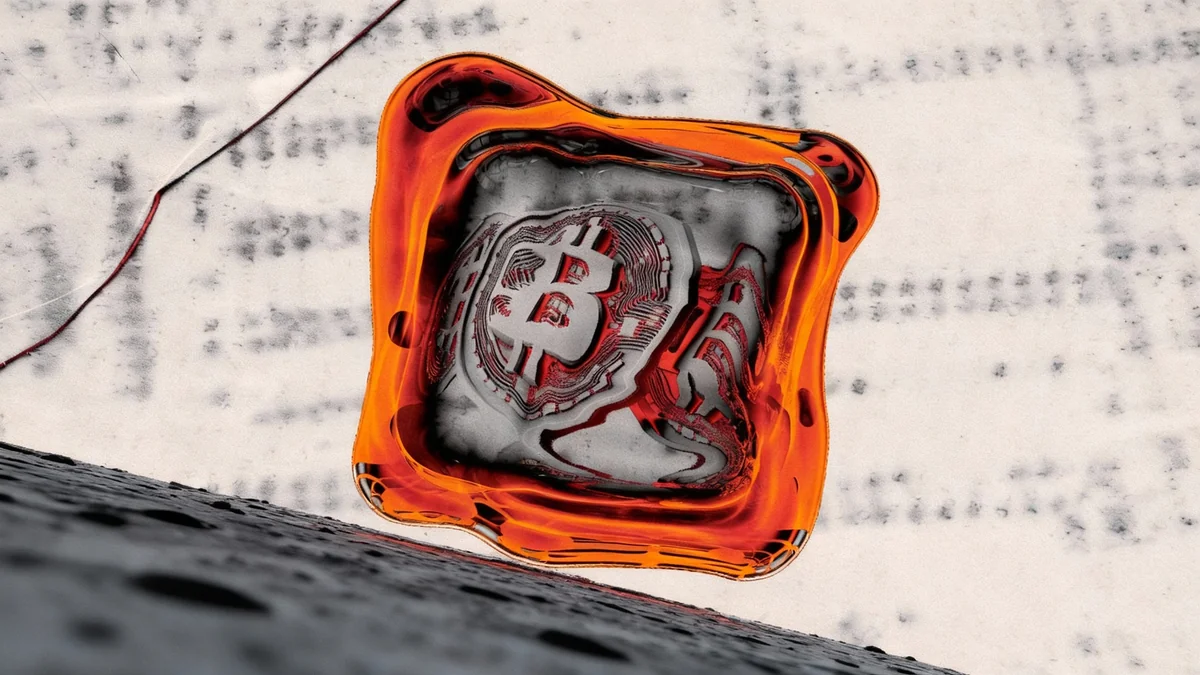The digital asset market is presenting a complex picture of high volatility and selective growth, as several alternative cryptocurrencies posted massive double-digit gains while market leaders like Bitcoin and Ethereum experienced minor pullbacks. This divergence highlights a dynamic landscape where investors are exploring opportunities beyond established assets, even as the broader market navigates significant economic headwinds.
Amid the daily price fluctuations, significant developments are pointing toward the industry's maturation. These include a Spanish government entity planning to cash in on a decade-old Bitcoin investment for a staggering 1,000x return and major financial players expanding crypto's use into new sectors like prediction markets and artificial intelligence.
Key Takeaways
- Several altcoins, including Internet Computer (ICP) and Arweave (AR), have experienced gains exceeding 30% in a single day, bucking the trend of larger cryptocurrencies.
- Bitcoin's performance for the final quarter of the year remains a key focus, with analysts pointing to a target price of $114,000 as the breakeven point for a positive finish.
- A Spanish council in Tenerife is moving to sell Bitcoin acquired in 2012, turning a €10,000 experimental investment into nearly $10 million.
- Industry leaders are predicting deeper integration of crypto with emerging technologies like AI, while new partnerships bring digital asset-based prediction markets to mainstream audiences.
A Market of Stark Contrasts
While Bitcoin hovered above the $101,000 mark with a slight decline of around 1.37%, a different story was unfolding in the altcoin space. A wave of buying pressure sent several lesser-known digital assets soaring, demonstrating a strong appetite for risk among certain market participants.
Some of the day's most notable performers included:
- Internet Computer (ICP): Surged by over 30%.
- Arweave (AR): Climbed more than 35%.
- Gala (GALA): Posted an impressive gain of over 45%.
- AIA: Saw its value increase by more than 43%.
This explosive growth in select altcoins contrasts sharply with the modest movements of established players. Ethereum (ETH) traded around $3,348, down about 1.20%, while other top-ten assets like Solana (SOL) and XRP also posted minor losses. The split performance suggests that capital is rotating within the crypto ecosystem as traders hunt for high-growth opportunities.
Understanding Altcoin Rallies
Altcoin rallies often occur when investor confidence is high but market leaders like Bitcoin are consolidating. Traders look for assets with smaller market capitalizations that have the potential for more significant percentage gains. However, these assets also carry substantially higher risk and are prone to sharp corrections.
Bitcoin's High-Stakes Fourth Quarter
Despite the excitement in the altcoin market, all eyes remain on Bitcoin's ability to close the year on a strong footing. The leading cryptocurrency has been trading sideways after a recent market-wide selloff, and experts are closely watching key price levels. For Bitcoin to finish the fourth quarter in positive territory, it would need to overcome its current position and rally past the $114,000 mark, representing a jump of at least 10% from its quarterly opening price.
Market analysts remain cautiously optimistic, but acknowledge the significant headwinds. A sustained rally beyond this breakeven point would signal renewed bullish momentum, potentially setting the stage for a strong start to the new year. Failure to reclaim this level could indicate a period of prolonged consolidation or further downside pressure.
From Government Experiment to Multi-Million Dollar Windfall
A remarkable story from Spain's Canary Islands offers a powerful reminder of Bitcoin's long-term potential. The Council of Tenerife is reportedly preparing to sell 97 Bitcoin that its Technological and Renewable Energy Institute (ITER) acquired in 2012 for just €10,000.
At the time, the purchase was part of a research initiative to understand blockchain technology. Over a decade later, that small investment has ballooned in value by approximately 1,000 times. The council's holdings are now worth around $9.8 million.
The council's potential sale represents one of the clearest examples of a public institution benefiting from an early, experimental foray into digital assets. The funds could reportedly be used to fuel further research, including in fields like quantum computing.
This situation underscores the immense wealth generated for early adopters of Bitcoin and serves as a unique case study in public sector technology investment. It highlights a journey from academic curiosity to a significant financial asset for the regional government.
The Expanding Universe of Crypto Applications
Beyond market prices and investment returns, the cryptocurrency industry continues to push into new and innovative territories. Mainstream adoption is accelerating through partnerships that integrate digital assets into everyday consumer applications.
Social gaming app MyPrize recently announced a distribution deal with Crypto.com's North American affiliate to list event contracts on its platform. This move introduces prediction markets—where users can bet on the outcomes of real-world events like sports, politics, and finance—to MyPrize's user base of over one million people.
AI and the Future of Decentralized Companies
Looking further ahead, some industry leaders envision a future where cryptocurrency and artificial intelligence converge to radically reshape business structures. At a recent conference, Robinhood CEO Vlad Tenev predicted the rise of AI-powered companies that require minimal human staffing.
Tenev compared these hypothetical, hyper-efficient organizations to the creation of Bitcoin itself, which was launched by the pseudonymous and absent creator Satoshi Nakamoto. He suggested that AI could enable "single-person companies" to operate on a global scale, much like how Bitcoin functions as a decentralized network without a central authority.
This forward-looking perspective suggests that the most profound impact of blockchain and digital assets may still be on the horizon, promising a future where decentralized, automated systems play a much larger role in the global economy.





